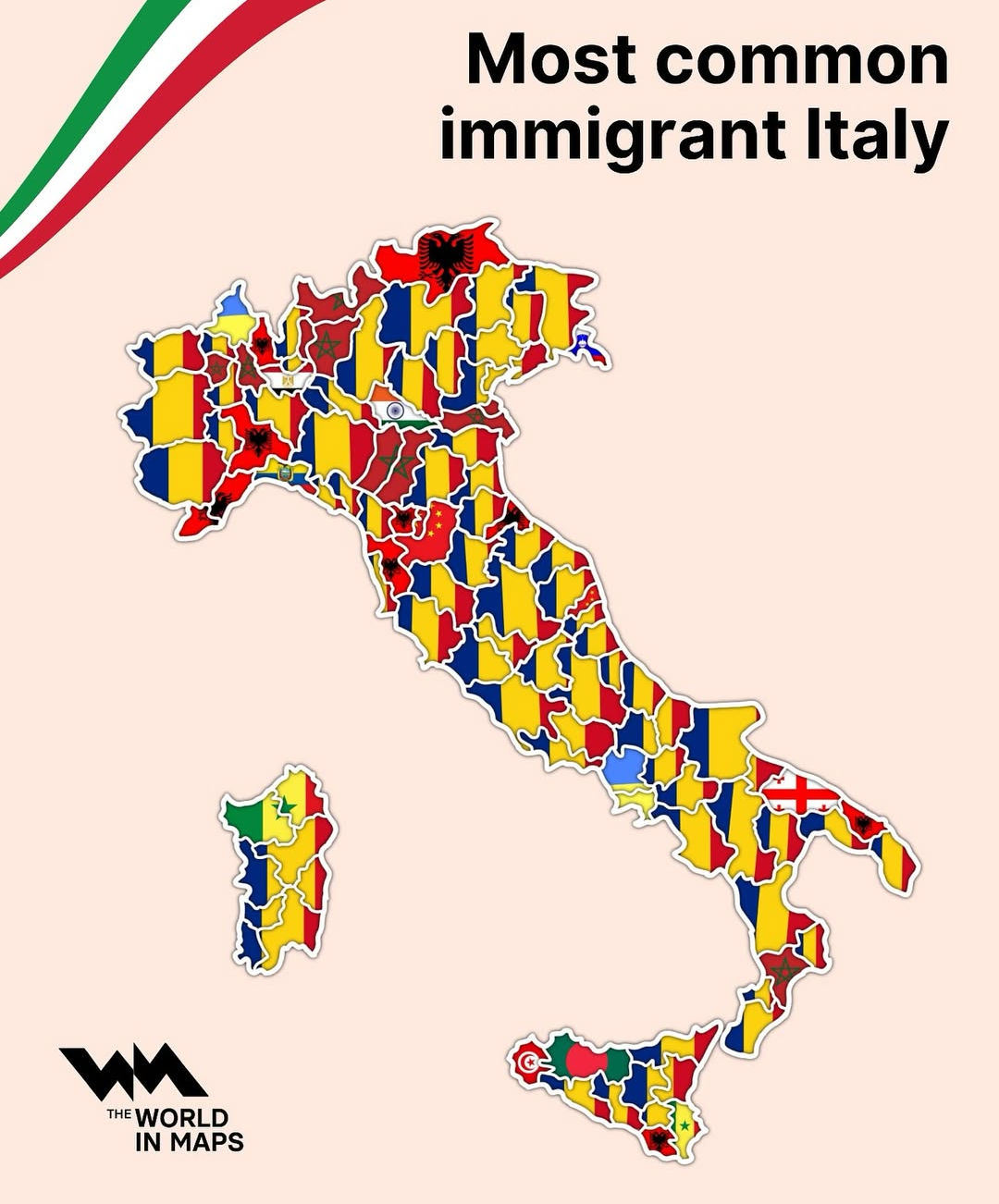Most Common Immigrant Groups in Italy Map


Marcus Rodriguez
Historical Geography Expert
Marcus Rodriguez specializes in historical cartography and geographic data analysis. With a background in both history and geography, he brings unique...
Geographic Analysis
What This Map Shows
The "Most Common Immigrant Groups in Italy Map" provides a comprehensive visual representation of the nationalities of immigrants residing in Italy. Each color-coded section depicts the predominant foreign nationality in various regions, offering insights into the diverse cultural fabric of the country. This visualization allows us to understand not just who is immigrating to Italy, but also the geographical spread of these communities across the country.
Deep Dive into Immigration Patterns in Italy
Immigration to Italy has a rich history, deeply intertwined with the country's socio-economic landscape. Over the years, Italy has attracted migrants for various reasons, including economic opportunities, family reunification, and educational pursuits. Interestingly, Italy’s strategic location in the Mediterranean has made it a prominent entry point for many migrants, particularly those from North Africa and the Middle East.
As of recent statistics, approximately 8.6% of Italy's population is made up of foreign-born residents, showcasing a significant demographic shift. The largest immigrant groups in Italy include Romanians, Albanians, Moroccans, and Chinese, among others. For instance, Romanians constitute the largest segment, primarily due to historical ties and labor opportunities. The prevalence of Romanian immigrants is particularly visible in regions like Lombardy, Emilia-Romagna, and Lazio, where many have settled in urban areas seeking employment.
Moreover, the influx of immigrants has led to diverse cultural influences, impacting everything from cuisine to language. Italian cities now boast a vibrant mix of cultures, evident in local markets, restaurants, and community events. However, this diversity also brings challenges, including integration and social cohesion, prompting discussions around immigration policies and societal attitudes.
Regional Analysis
Breaking down the map, we can observe distinct trends in various Italian regions. For example, in the northern regions like Lombardy and Veneto, there is a noticeable concentration of immigrants from Eastern Europe, particularly Romania and Poland. These groups are often involved in sectors like agriculture, construction, and services, contributing significantly to the local economy.
In contrast, the central regions, especially Lazio, show a higher presence of immigrants from North Africa, especially Morocco. The historical ties between Italy and these countries, along with geographical proximity, explain this demographic pattern. Interestingly, the Southern regions, such as Calabria and Sicily, have a significant number of migrants from sub-Saharan Africa, reflecting recent migration trends and humanitarian crises.
It's also worth noting the emergence of new immigrant communities in Italy. For instance, the Chinese community has been growing steadily, particularly in trade and commerce, reshaping local economies and creating a unique cultural blend. The presence of diverse communities not only enriches the social fabric but also contributes to economic dynamism, driving innovation and entrepreneurship in various sectors.
Significance and Impact
Understanding the dynamics of immigration in Italy is crucial for several reasons. Firstly, it highlights the importance of multiculturalism in shaping Italy's identity. As immigrants contribute to the economy, their cultural backgrounds enrich Italian society, fostering tolerance and understanding among individuals.
However, immigration also poses challenges, including the need for effective integration policies and addressing social tensions that may arise from rapid demographic changes. The ongoing debates surrounding immigration laws and policies in Italy reflect the complexities of this issue, especially in light of current global movements and humanitarian considerations.
Looking ahead, projections suggest that immigration will continue to play a significant role in Italy's demographic landscape. With global issues such as climate change and economic disparities driving migration, Italy will likely see shifts in its immigrant population. Thus, fostering inclusive policies that promote social cohesion while respecting cultural diversity will be essential for Italy's future stability and growth.
In conclusion, the "Most Common Immigrant Groups in Italy Map" not only illustrates where immigrants are located but also serves as a reminder of the evolving narrative of Italy as a nation. It is a testimony to the resilience of communities and the continuous interplay of cultures that define the Italian experience today.
Visualization Details
- Published
- August 14, 2025
- Views
- 68
Comments
Loading comments...